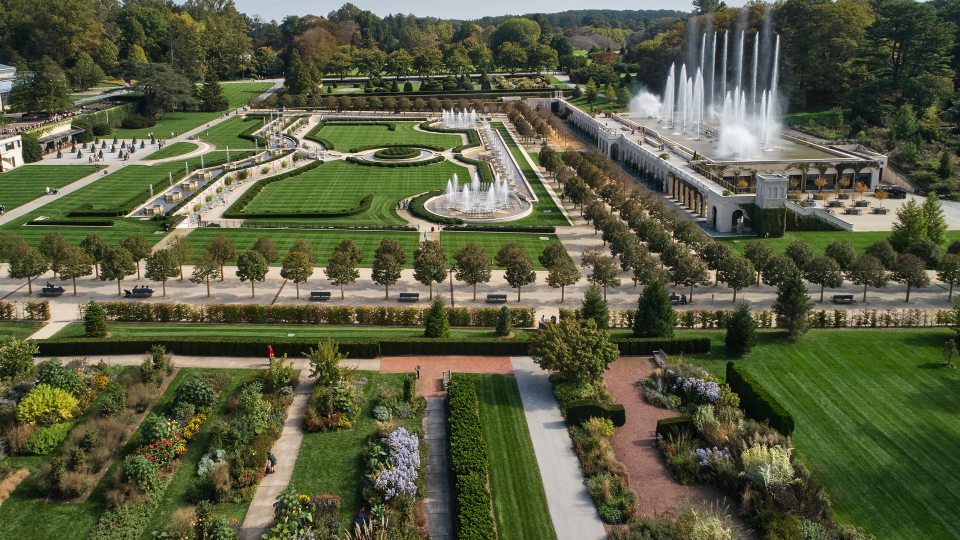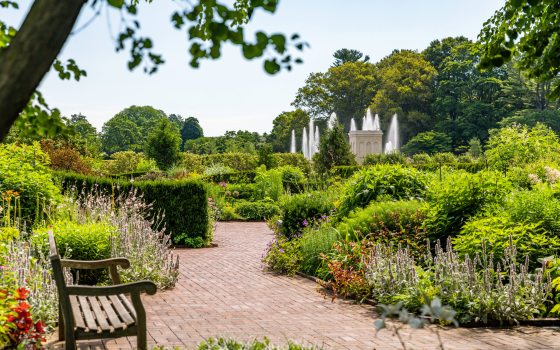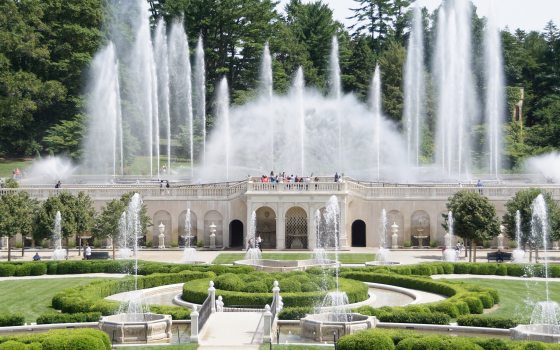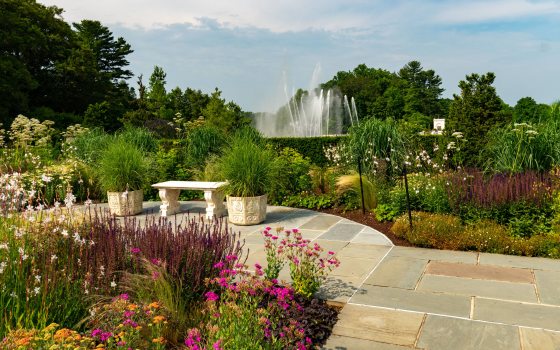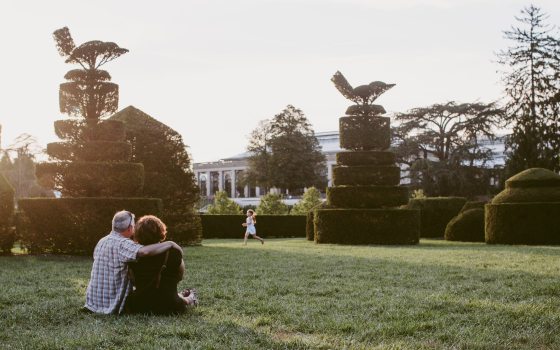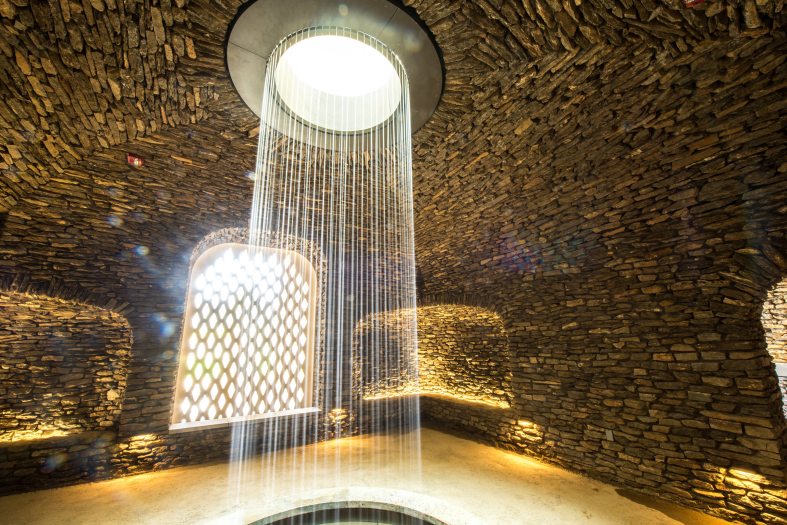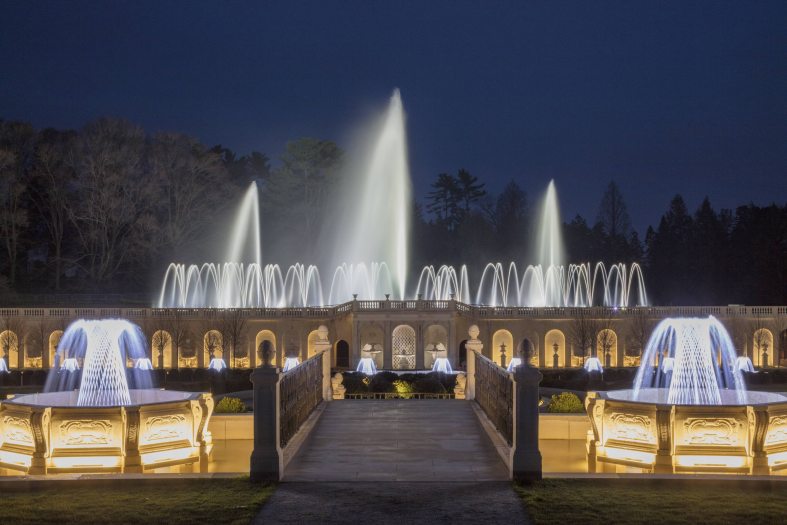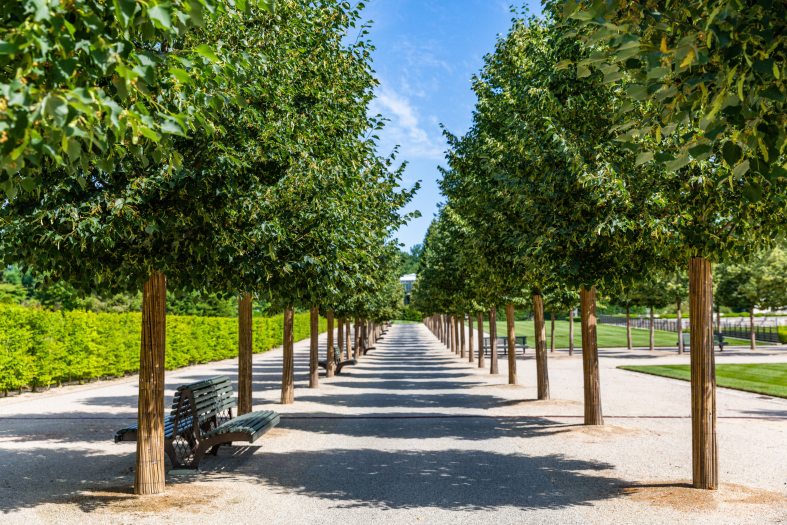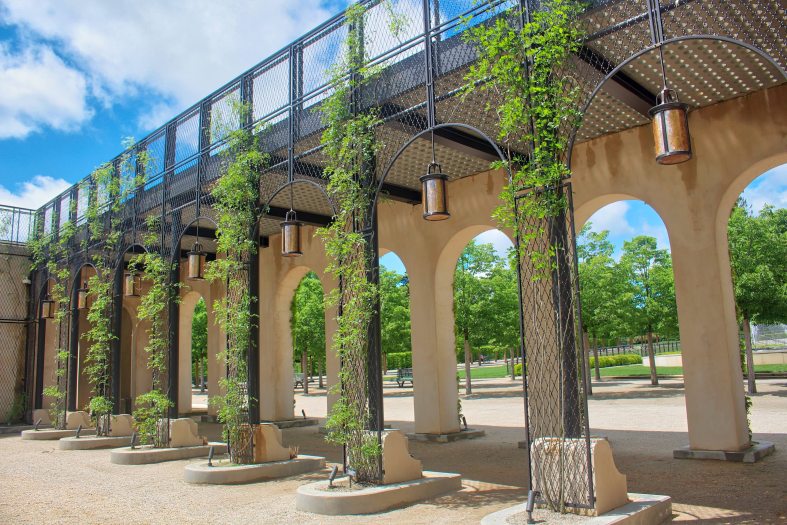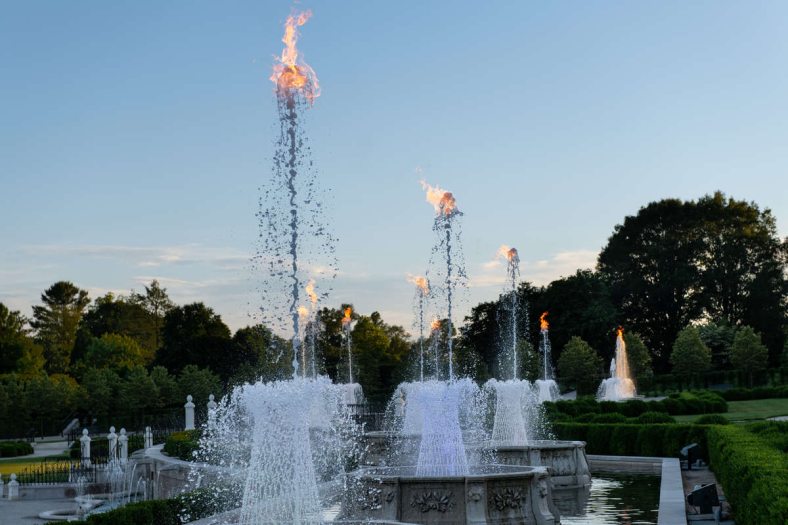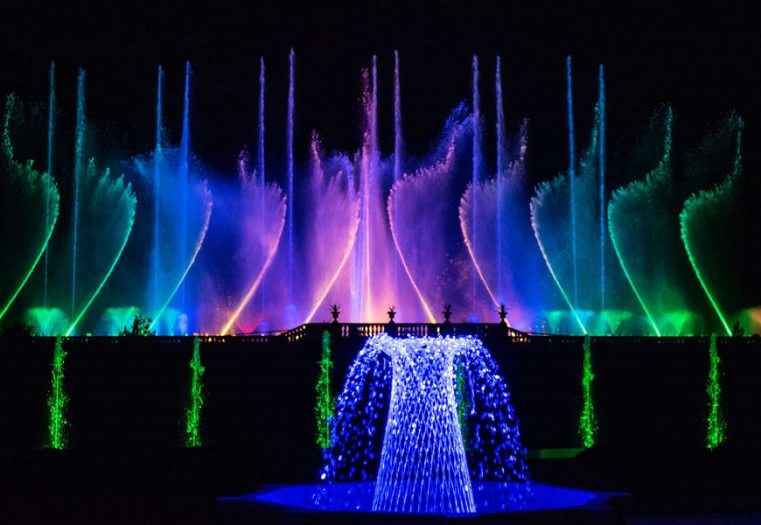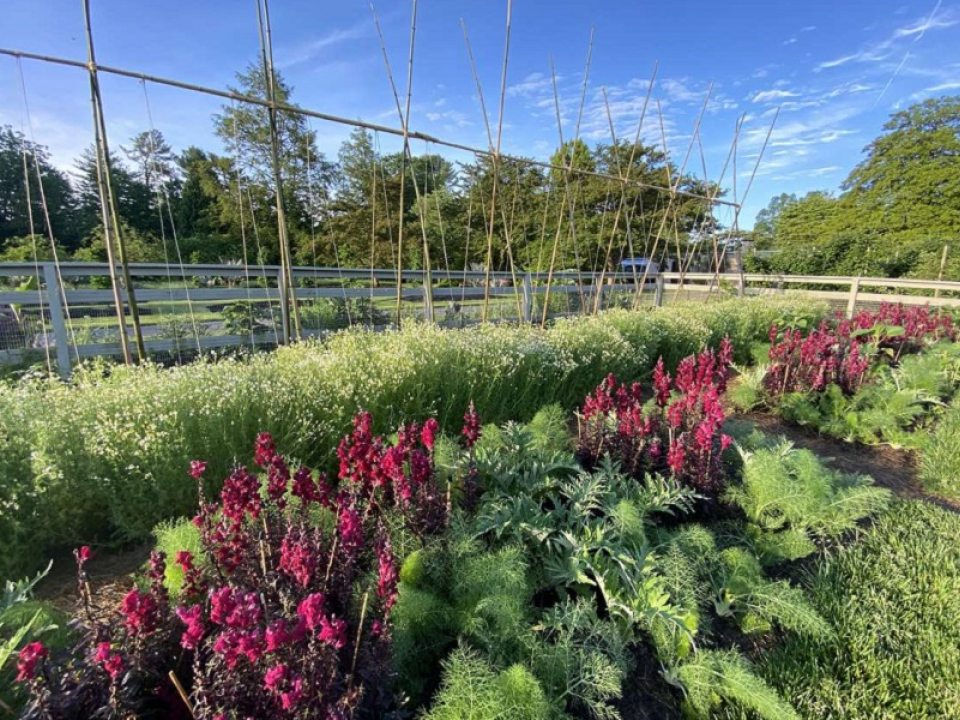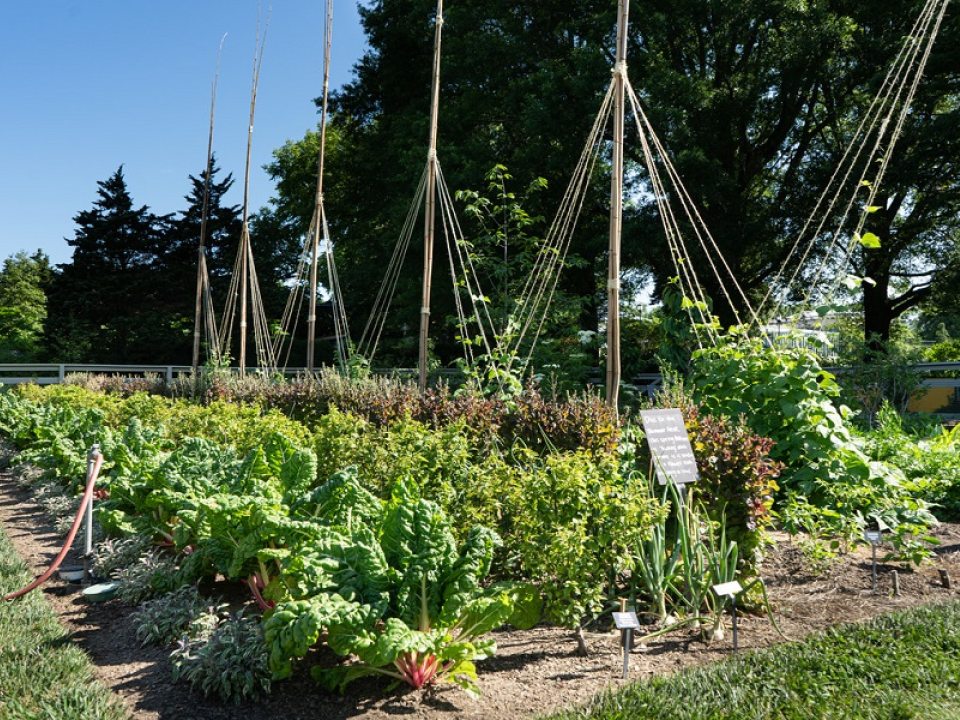The Main Fountain Garden District represents the culmination of founder Pierre S. du Pont’s vision for Longwood: the garden as grand theater. In addition to stunning European-inspired architecture and mesmerizing fountain performances in the Main Fountain Garden, the Rose Garden stuns with four seasons of expression, in view of the expertly clipped Topiary Garden and its geometric shapes. To the east of the fountains, the Idea Garden echoes the orderly spirit of formal design with its Carpinus hedge and rectangular beds—defining a space that celebrates the creative process of gardening.
About This District
The classical gardens of this area have captivated guests for more than 90 years. Inspired by Pierre’s travels to Europe’s great water gardens and his seminal visits to several world’s fairs and expositions, the Main Fountain Garden highlights his lifelong passion for horticulture, engineering marvels, and the beauty of exceptional design.
